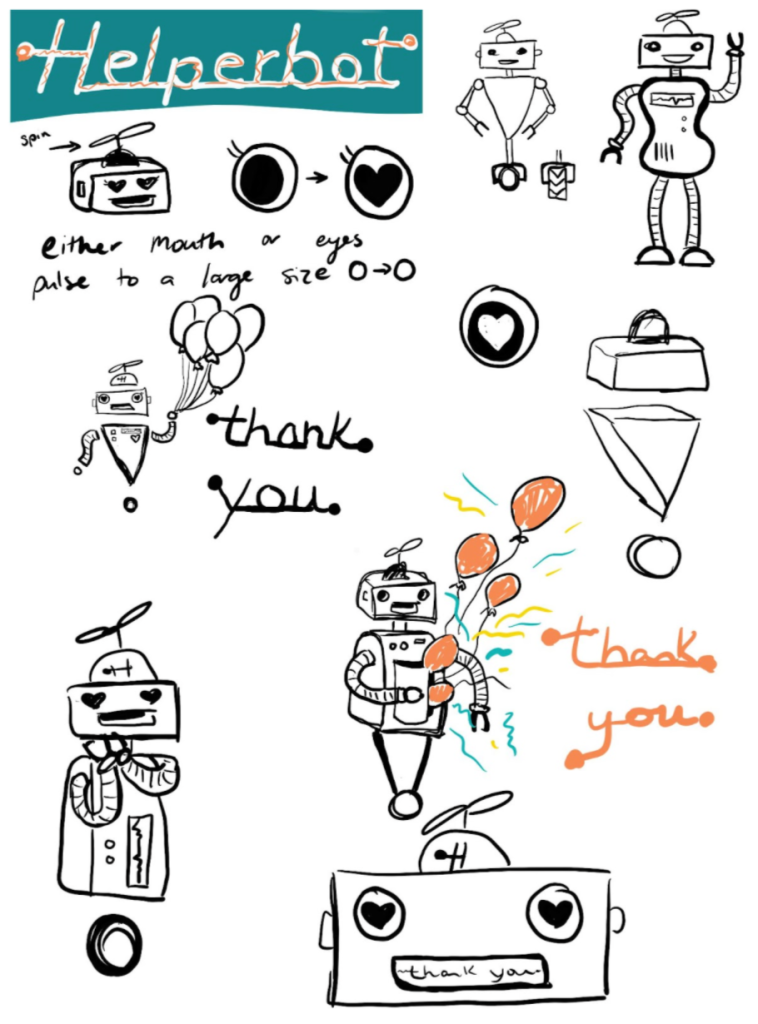This post is the third and final in a series devoted to the development of Helperbot, Alley’s Slack application for remote Scrum teams. Be sure to check out the previous posts on the origin of Helperbot and its product development!
In our blog series so far, we have covered the origins of Helperbot — a result of Alley’s own need to build a tool to suit its remote Scrum practice — and the process of bringing our tool to market for the benefit of Scrum teams everywhere. Since launching Helperbot in the Slack App Directory in June 2020, we have seen over a hundred organizations install the tool, and we log interactions on a daily basis. It is highly rewarding to watch our creation out in the world, helping teams succeed! But now what?
In the last post, we discussed testing for various business hypotheses — viability, feasibility, and desirability (an idea for prototyping product ideas that originated with IDEO in the early aughts) through an extensive round of alpha testing. From this testing, we determined that a market for our product existed, but questions still remain. Just how large is the market for remote Scrum tooling like Helperbot? What is the potential for scale? How can we not only drive up our installation count but also drive up our number of recurring, regular users? (i.e. a full organizational adoption of Helperbot, rather than a mere workspace installation.)
We decided the best way to answer these questions would be a combination of marketing and product education to reach and retain our potential market. We realized we needed to succinctly marry three distinct concepts together in a way that our new users had perhaps not yet considered. The following three pillars working together are so native to Alley that we almost take them for granted. But that doesn’t mean that they would come naturally to teams new to Scrum, or first-time Helperbot adopters, including the thousands of teams that found themselves suddenly remote due to the pandemic:
- Agile estimation, Sprint planning, and Backlog Refinement
- Fully remote, distributed team composition
- Tandem tooling: Video, chat, and project management software
For Helperbot to be effective in improving a team’s planning efficiency, the team must first be comfortable with employing its various communication tools in tandem to connect its remote members both synchronously and asynchronously to execute the rituals required to properly estimate a backlog and plan for a Sprint.
To ensure that our new and potential users understood how Helperbot works within and alongside Slack, Zoom, Jira, and so on, we decided to create an FAQ as well as a product demonstration video. Together, these would serve an educational purpose and, as content for our website and social media channels, would serve a marketing and outreach purpose as well.
Creating the product video, part demonstration, part commercial, seemed like it would be a daunting task. As we mentioned in our last post, Alley is an agency and our revenue comes from working with our clients. The product development of Helperbot was an internal project representing opportunity cost. In other words, we didn’t have much of a budget for marketing and outreach, so we needed to be as scrappy as possible. An early spike on animation and production firms confirmed our suspicion that hiring the “pros” would be too cost-prohibitive. Luckily, we have no shortage of talent internally!
Left: Initial sketches for Helperbot logo design by Kelsey Locotos; Right: Final Helperbot Logo
Kelsey Locotos, Alley’s Director of Operations, also happens to be a wonderful illustrator and graphic designer. In fact, she designed Helperbot’s logo, taking it through several iterations before landing on the graphic that you see today. Naturally, we knew she would be the perfect fit for creating animations for our Helperbot video. Alley’s Operations Analyst Brandon Fields helps run our social media and is no stranger to content creation, so we asked him to put his video editing chops to use. And through helping to produce Alley’s agile-focused podcast, Two Scrums Up, the author of this post knows a thing or two about audio recording, editing, and sound mixing. So I volunteered to record the voiceover. The three of us worked together to produce the following video. We’re really proud of what we came up with. Check out the result below!
Ultimately, creating this animated product demo was as fun and rewarding as it was outside of our zone of expertise. The process reinforced the idea that we can pool our talents internally to make something really cool without paying a lot of money to an outside marketing firm or animation studio. We know the video isn’t perfect. It’s certainly not as slick as what we would have gotten by paying thousands of dollars to professional video producers. But in its own scrappy way, it serves as the Minimum Viable Product (MVP again!) for a Helperbot demonstration video, and most importantly — it’s getting us results. So far, our DIY approach to marketing Helperbot has paid off, as we have seen not only our download count rise but also an increase in repeat interactions with the application. We would love to hear from you about similar efforts. What have been some of your successes and challenges with DIY marketing on a limited (or non-existent) budget? Tweet to us at https://twitter.com/alleyco! We hope you enjoyed this series on Alley’s journey of bringing Helperbot from an idea to a product. If you’d like to try Helperbot with your own team, be sure to download it, check out our video, review the FAQ, and send us feedback!


